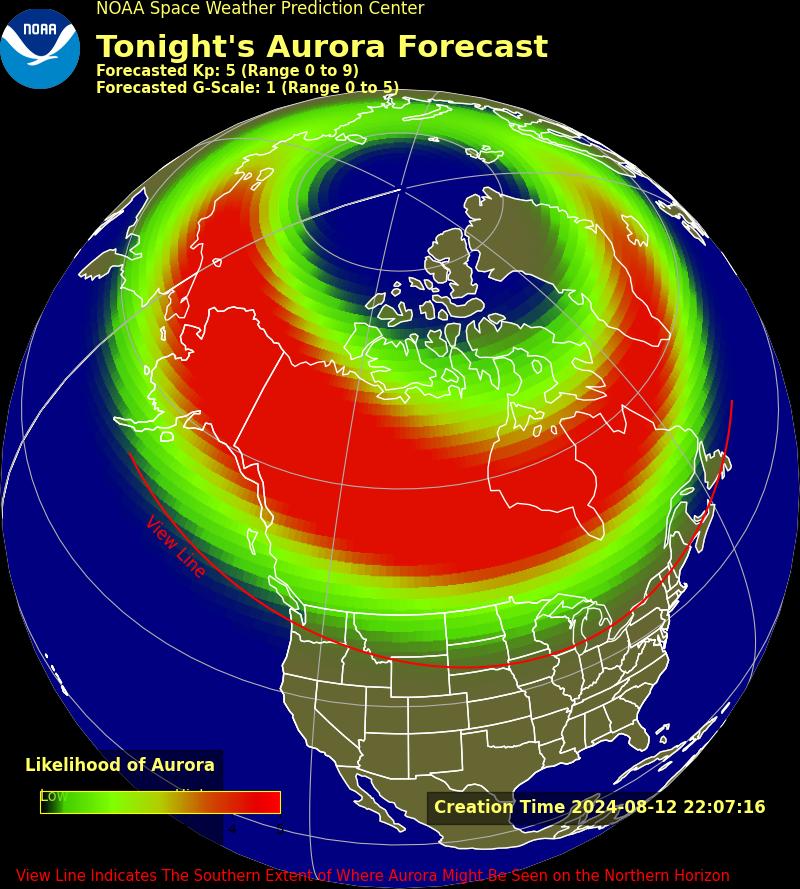A “severe” G4-scale geomagnetic storm hit Earth this morning following a series of powerful solar eruptions, the National Oceanic and Atmospheric Administration (NOAA) announced. The storm has since subsided — but bright auroras could still be visible in more than a dozen states near the U.S.-Canada border as mild geomagnetic activity continues to crackle through the atmosphere.
G4-scale storms like the one detected this morning can have adverse effects on satellites, power grids and radio communication systems, NOAA added. Fortunately, most of these impacts are mitigable with advanced warning.
“Potential impacts of this level of storming include degradation of high frequency communications at high latitudes and increased drag on satellites in low earth orbit,” according to an NOAA advisory released on Monday (Aug. 12). “A further increase in space weather activity is not anticipated at this time.”
NOAA first recorded G4-class storm conditions on Monday around 11 a.m. EDT, with the storm subsequently weakening. A moderate G2-class storm is predicted to persist into Wednesday (Aug. 14).
Geomagnetic storms occur when charged, high-speed globs of solar plasma called coronal mass ejections (CMEs) erupt from sunspots and collide with Earth’s magnetic field. These collisions send charged solar particles racing along our planet’s magnetic field lines toward the North and South poles, exciting molecules in the atmosphere along the way and causing them to emit light in the form of auroras.
Solar activity is in high gear right now, with the sun having launched at least five CMEs toward Earth since Aug. 10, according to NOAA. Some of these CMEs triggered widespread auroras over the U.S. and around the world this past weekend, with skywatchers as far south as Texas, Arizona and Colorado reporting rare views of the northern lights.

Tonight’s auroral display isn’t likely to reach such extreme latitudes, but may be visible in parts of Washington, Idaho, Montana, North and South Dakota, Minnesota, Wisconsin, Michigan, New York, Vermont, New Hampshire and Maine, according to NOAA’s latest forecast. To view auroras, head as far from artificial light sources as possible, using a dark sky map if necessary. You can see auroras with the naked eye, but a smartphone camera should be able to capture the celestial light show with even greater sensitivity.
NOAA’s Space Weather Prediction Center measures geomagnetic storms on a scale from G1 (minor) to G5 (extreme). In May, an extreme G5-scale storm slammed Earth in one of the most powerful solar assaults in more than 20 years. The event caused temporary satellite malfunctions and power grid irregularities in parts of the world, and made the northern lights visible as far south as Florida, but didn’t cause any significant damage.
CME outbursts and powerful geomagnetic storms both occur more often during the period of peak activity in the sun’s 11-year cycle, known as solar maximum. The current cycle’s solar maximum was initially predicted to begin in 2025, but some researchers suspect the period may have already begun.




